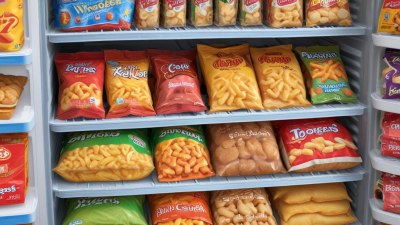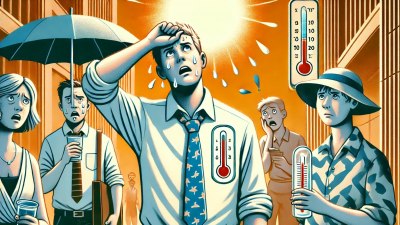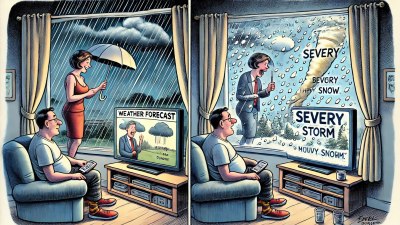Why Frozen Snacks Disappear Faster When You “Didn’t Think It Was That Warm”
Explore the science behind frozen snacks disappearing quickly when we underestimate warmth.

This image was created with the assistance of Freepik
Many of us can recall the frustration that arises when frozen snacks seem to vanish at an alarming rate, especially when we were under the impression that the temperature outside was quite manageable. This phenomenon ties into a variety of factors, including temperature perception, the properties of frozen snacks, and human behavior. Understanding these aspects can shed light on why that seemingly innocent bag of frozen treats doesn't last as long as we expect.
The Science of Temperature Perception
Our perception of temperature plays a significant role in how we manage food, especially frozen items. Temperature perception is subjective and can be influenced by various factors such as recent exposure to different temperatures, humidity levels, and even our internal body temperature at the time of assessment. When we think the weather or our surroundings are milder than they actually are, we often let our guard down regarding how we store or consume frozen snacks.
Why Frozen Snacks Are So Tempting
One of the leading reasons frozen snacks tend to disappear more quickly is their undeniable appeal. The texture and flavor burst that these snacks provide are often irresistible. Whether it's ice cream, frozen fruit, or novelty treats, the combination of coldness and taste makes them a go-to choice for satisfying cravings. This allure can lead to a rapid consumption of these snacks – particularly in warm weather when cravings for cold items peak.
The Role of External Temperature
When temperatures rise, the conditions become more conducive to eating cold items. As external temperatures climb, our cravings for chilled snacks intensify. However, if we're underestimating how warm it is, we may not adjust our consumption habits accordingly. This could mean that we consume our frozen snacks more rapidly than we would if we recognized the heat, leading to the all-too-familiar feeling of running out too quickly.
Behavioral Factors at Play
Behavioral tendencies also play a considerable role in the rapid disappearance of frozen snacks. For example, during warmer months, many people engage in more social activities, picnics, or barbecues, all of which may increase access to and consumption of frozen snacks. Plus, when others around us are indulging, we're likely to join in, often leading to a quicker depletion of frozen treats. This social aspect can easily lead us to underestimate how quickly we are consuming our chilled goodies.
The Impact of Storage Conditions
The way frozen snacks are stored can substantially affect their consumption rate. For those who keep their snacks in the freezer in large quantities, the convenience of grabbing a handful can contribute to faster consumption. When items are readily available—and perhaps perceived as being at risk of melting or softening—the urge to consume them increases. Furthermore, poorly organized freezers can lead to a cycle of misplacing items, causing some to be forgotten until it's too late, leading to an accidental binge when rediscovered.
Melting and Temperature Management
Another important factor contributing to the swift disappearance of these snacks is melting. When frozen items are not kept at a consistent freezing temperature, they are more likely to soften or melt when taken out, especially on a warm day. If individuals fail to realize how warm it is and bring out their frozen snacks, they may consume them quickly to prevent them from melting, thus contributing to their rapid disappearance.
Serving Size Misjudgments
Another psychological element in our relationship with frozen snacks is the perception of serving sizes. We might underestimate how much we should eat, thinking that “just one more” won’t hurt. This often leads to overindulgence. In situations where individuals consume snacks while watching television or socializing, it is easy to keep reaching for more without fully recognizing how much has been consumed. By the time we realize how many snacks we have enjoyed, our supply has diminished significantly.
Influence of Marketing and Availability
The prevalence of advertising and the availability of frozen snacks can also be a contributing factor. When we are constantly bombarded with advertisements that highlight the delicious nature of these items, it encourages cravings and impulsive purchasing behaviors. Supermarkets promote regular sales on frozen products during warmer months, causing people to stock up, often leading to quicker consumption of these items before they have a chance to realize how warm it has gotten.
Social and Cultural Context
The cultural context around eating frozen snacks may also influence their rapid consumption. In many cultures, frozen treats are associated with summer activities and family gatherings, which can amplify consumption when temperatures rise. This mindset reinforces the “need” to indulge in treats when the weather warms up, leading us to enjoy our frozen snacks more than we might during cooler seasons when the availability and desire are less pronounced.
Mindfulness in Consumption
To combat the trend of rapidly depleting your stash of frozen treats under the impression that it's not as warm as it is, practicing mindfulness can be immensely helpful. This means being aware of the environment, listening to your body’s signals, and recognizing when you are actually full or satisfied. Maintaining a mindful approach to snack consumption can not only help you enjoy them more fully but also help prolong the enjoyment of your favorite frozen snacks.
The Balancing Act
In conclusion, frozen snacks may seem to vanish quickly when one fails to acknowledge the warmer temperatures, and understanding the science behind it reveals that several interconnected factors are at play. By being mindful of temperature perception, controlling portions, and recognizing social influences, we can establish a better relationship with these tempting treats. With a little thought and consideration, we can enjoy our favorites without worrying about their too-rapid disappearance.











